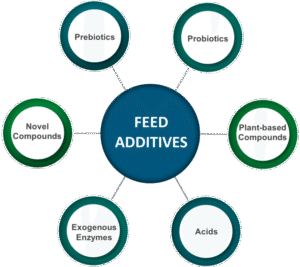Making permanent microscope slides of insect hard parts, including antennae, mouthparts, wings, legs, terminal segments, and genitalia, is a meticulous process often used in entomology to study the anatomy of insects in detail. Here’s a step-by-step guide to help you create permanent slides:
Materials Needed:
1. Dissecting tools: fine needles, forceps, and scalpel
2. Microscope slides and coverslips
3. Mounting medium: Canada balsam, Euparal, or other permanent media
4. Clearing agent: Potassium hydroxide (KOH) or sodium hydroxide (NaOH)
5. Dehydrating agents: Ethanol (in increasing concentrations, e.g., 70%, 90%, and 100%)
6. Stains (optional): Chlorazol Black E or other insect stains (if staining the parts)
7. Xylene or clove oil (for clearing)
8. Dissecting microscope
9. Labeling materials
Step-by-Step Procedure:
1. Dissection of Insect Parts:
• Place the insect in a Petri dish or on a dissection plate under a dissecting microscope.
• Carefully dissect the insect using fine needles or forceps to remove the antennae, mouthparts, wings, legs, and genitalia.
• Be cautious not to damage the delicate structures during the dissection.
2. Clearing the Specimen:
• To remove tissues that obscure the hard parts, immerse the dissected pieces in a clearing solution such as a 10% KOH solution for 12–24 hours. This softens and clears the soft tissues while leaving the hard exoskeleton intact.
• Check the progress under a microscope. When the parts are sufficiently cleared, rinse them in distilled water to stop the clearing process.
3. Dehydration:
• Gradually dehydrate the parts by passing them through an ethanol series: start with 70% ethanol for about 10 minutes, then move to 90% ethanol for another 10 minutes, and finally, 100% ethanol for 10 minutes.
• Make sure the parts are fully dehydrated before moving on to the mounting step, as water can affect the clarity of the final slide.
4. Clearing the Specimen:
• Immerse the dehydrated parts in a clearing agent such as xylene or clove oil for 10–15 minutes. Clearing makes the parts more transparent and improves the optical clarity when viewed under the microscope.
5. Mounting the Specimen:
• Place a small drop of your chosen mounting medium (e.g., Canada balsam or Euparal) in the center of a clean microscope slide.
• Carefully position the insect parts in the drop of medium using fine needles or forceps. Arrange them so that they are flat and well spread out.
• Place a coverslip over the parts, avoiding air bubbles. If necessary, gently press the coverslip down to remove excess medium and ensure a smooth, bubble-free mount.
6. Curing and Sealing the Slide:
• Allow the slide to dry in a dust-free environment. If you use Canada balsam, the slide will need to cure for several weeks to months at room temperature or in a warm place (not in direct sunlight).
• Once the slide is fully dried and the mounting medium has hardened, you can seal the edges of the coverslip with clear nail polish or specialized slide-sealing varnish to prevent air and moisture from affecting the slide over time.
7. Labeling:
• Label the slide with the specimen’s identification (species, sex, and any other relevant information), the body parts mounted, the date, and the mounting medium used.
• Store the slides in a cool, dry place to preserve them for long-term study.
8. Storage:
• Store the prepared slides in a slide box, away from direct sunlight and extreme temperatures. Keep them in a dry place to avoid degradation of the mounting medium.
Special Considerations:
• Genitalia: Sometimes genitalia are stained with dyes (e.g., Chlorazol Black or Eosin) before mounting to enhance visibility.
• Wings: They may require less clearing but should still be dehydrated and carefully mounted to prevent folding or distortion.
• Mounting Medium: The choice of mounting medium is important for long-term preservation. Canada balsam is very durable but requires more time to prepare, while Euparal is faster but may not last as long.
Thank you for reading. Don't forget to subscribe & share!









